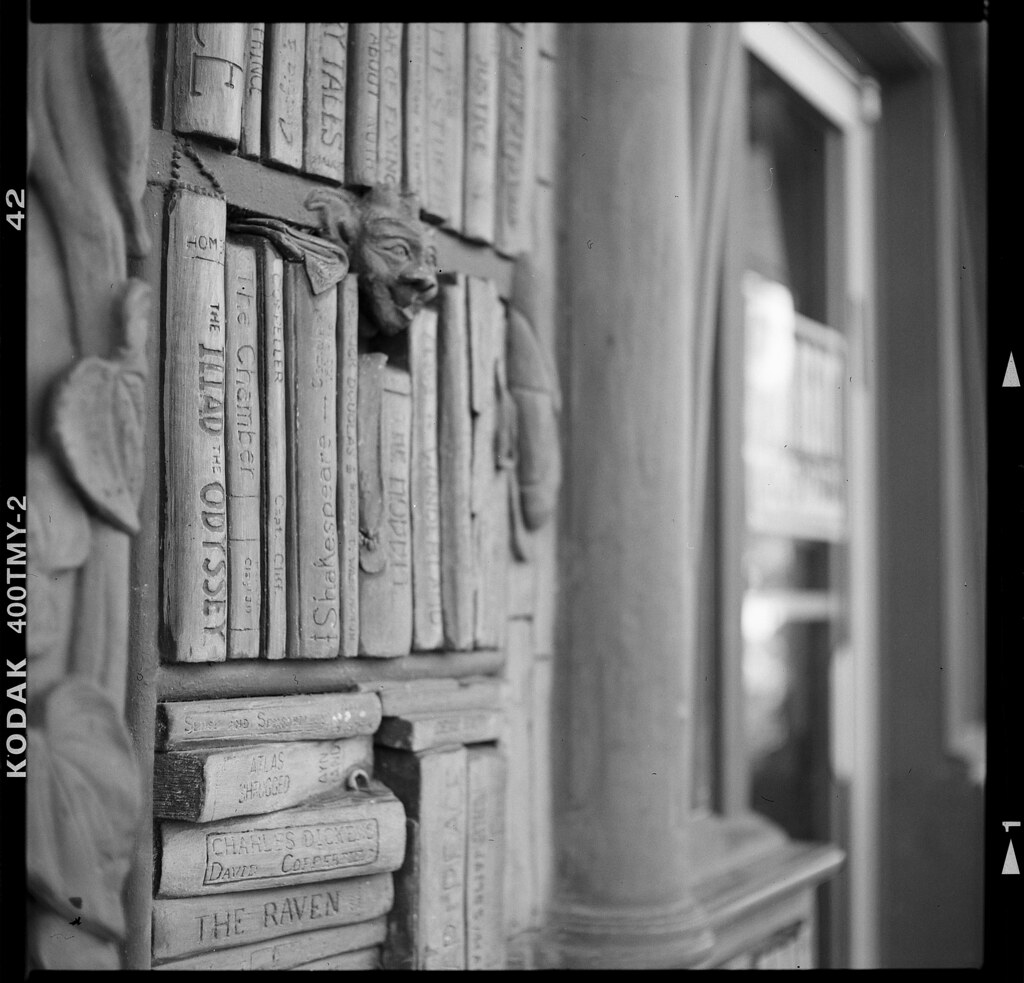When I first started getting back into film after well over a decade of digital cameras, I ran across a guy that was absolutely convinced that no scanner could beat his method of "scanning" negatives and slides. He would use a macro lens attached to his digital camera, and photograph the negative in sections, merging them in software later. He posted an outline of his method
on this page.
 |
The test image, a number of books carved
into a storefront in Mt. Dora, FL. |
I was intrigued by this (and his amazing results), and decided to give it a try myself. I picked out a random black & white photo (to make reversal easier) that had a good sharp focus point on it. This photo was taken with my Mamiya C330 on Kodak TMax 400 film (120 format, 6x6).
I don't have an Epson V700, but I do have a Canon Canoscan 9000F Mark II to use as a comparison. It doesn't support any transparency larger than 120 film, but at around $150, it's a fraction of the cost. I scanned the frame at a (pretty ridiculous) 4800 dpi, which resulted in an image that was around 11600x11500, or about 127 megapixels. Of course, this is well beyond the limitations of the scanner's optics, but I will scale it down shortly for comparison purposes.
